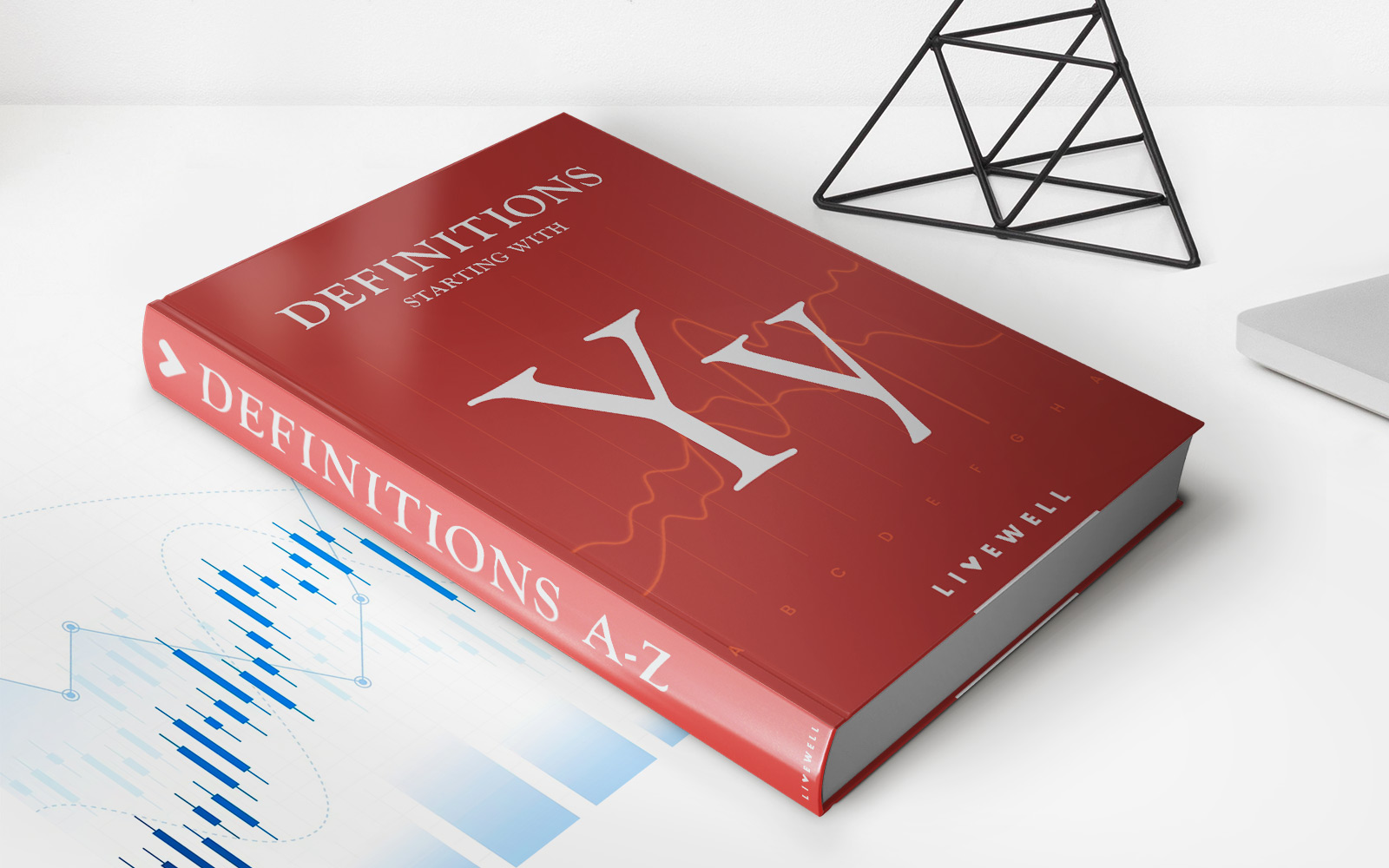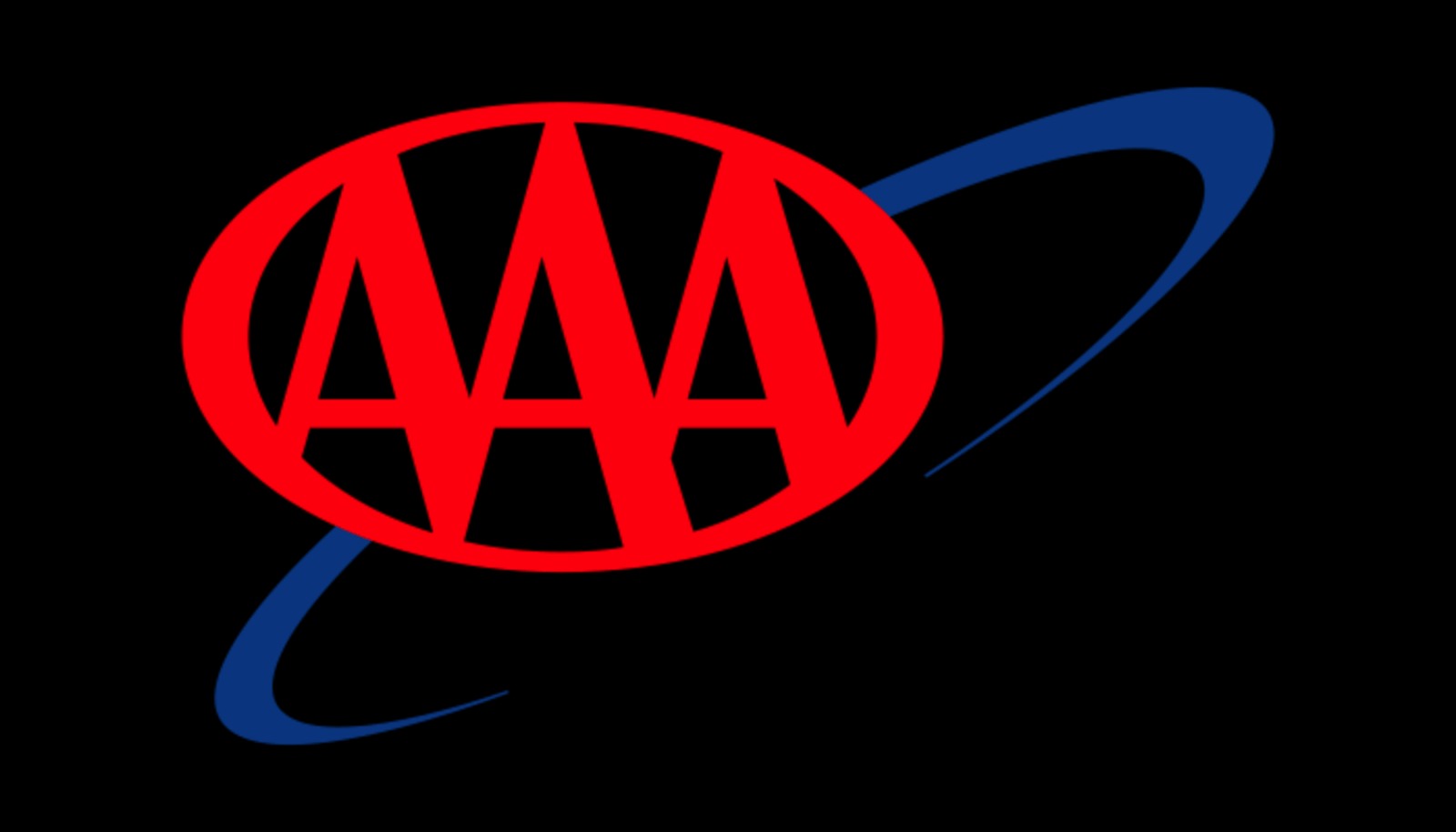Home>Finance>What Is Financial Literacy Class In High School


Finance
What Is Financial Literacy Class In High School
Published: December 23, 2023
Discover the importance of financial literacy in high school and how it equips students with essential finance skills for a successful future. Explore finance classes and their impact on students' financial well-being.
(Many of the links in this article redirect to a specific reviewed product. Your purchase of these products through affiliate links helps to generate commission for LiveWell, at no extra cost. Learn more)
Table of Contents
- Introduction
- Importance of Financial Literacy Education
- Objectives of Financial Literacy Class in High School
- Curriculum of Financial Literacy Class
- Topics Covered in Financial Literacy Class
- Teaching Methods and Strategies
- Benefits of Financial Literacy Education in High School
- Challenges and Limitations of Financial Literacy Education in High School
- Role of Teachers and Educators in Financial Literacy Education
- Conclusion
Introduction
Financial literacy is a vital life skill that is often overlooked in traditional high school education. However, the importance of teaching young adults about personal finance is undeniable. With the ever-increasing complexity of the financial world, it is essential for high schools to offer financial literacy classes to equip students with the knowledge and skills they need to make informed financial decisions.
A financial literacy class in high school serves as a foundation for understanding the basic concepts of money management, budgeting, investing, and credit. It empowers students to take control of their financial future and provides them with the necessary tools to navigate the complex world of finance.
By offering financial literacy education in high school, students can develop the necessary skills to become financially responsible adults. They learn how to manage their finances, make smart spending decisions, save for the future, and protect themselves from financial pitfalls.
This article will explore the importance of financial literacy education, the objectives of financial literacy classes in high school, the curriculum and topics covered, teaching methods and strategies, as well as the benefits, challenges, and limitations of financial literacy education in high school. Additionally, we will discuss the crucial role that teachers and educators play in imparting financial knowledge to students.
Overall, a financial literacy class in high school is not just about teaching students how to balance a checkbook; it is about providing them with the tools and knowledge they need to secure a financially stable future. With a solid foundation in financial literacy, students can make informed decisions, avoid debt, and ultimately achieve their financial goals.
Importance of Financial Literacy Education
Financial literacy education in high schools is of utmost importance for several reasons. It provides students with the knowledge and skills necessary to make informed financial decisions, ultimately shaping their financial well-being for the rest of their lives.
One of the key reasons financial literacy education is crucial is that it addresses the lack of financial education in our society. Many young adults enter the real world without basic financial knowledge, leading to financial difficulties and poor decision-making. By introducing financial literacy classes in high schools, we can bridge this knowledge gap and equip students with the tools they need to navigate the complex financial landscape.
Financial literacy education also helps students develop essential life skills. By teaching them about budgeting, saving, investing, and understanding financial products such as credit cards and loans, students gain the necessary skills to manage their personal finances effectively. These skills are not only applicable in their personal lives but also in their future careers and entrepreneurial endeavors.
Furthermore, financial literacy education promotes financial responsibility and empowerment. When students understand the concepts of budgeting and saving, they are more likely to make responsible financial decisions. They are equipped to avoid excessive debt, effectively plan for their future, and make informed choices about spending and investing their money.
Another vital aspect of financial literacy education is instilling an understanding of financial risks and consequences. Students learn about the potential pitfalls of poor financial decision-making, such as accumulating excessive debt, falling victim to scams, or failing to plan for retirement. By understanding the risks and consequences, students are better equipped to make thoughtful financial choices and protect themselves from financial hardships.
Moreover, financial literacy education promotes economic stability and financial inclusion. When individuals have a solid understanding of personal finance, they are more likely to contribute positively to the economy. They are less likely to rely on social welfare programs and more likely to invest, save, and contribute to their local communities.
Overall, financial literacy education in high schools is of paramount importance. It equips students with the tools and knowledge they need to make informed financial decisions, prepares them for future financial responsibilities, and promotes economic stability and financial well-being for individuals and society as a whole.
Objectives of Financial Literacy Class in High School
The primary objectives of a financial literacy class in high school are to equip students with the necessary knowledge, skills, and attitudes to make informed financial decisions and to develop good financial habits. These objectives are designed to prepare students for the financial challenges they will encounter throughout their lives.
1. Financial Knowledge: One of the main objectives is to provide students with a strong foundation of financial knowledge. This includes understanding basic financial concepts, such as budgeting, saving, investing, credit, and taxes. Students should also be familiar with the various financial products available, such as checking accounts, credit cards, loans, and insurance. By developing a comprehensive understanding of these topics, students are better prepared to navigate the world of personal finance.
2. Money Management Skills: Another key objective is to teach students essential money management skills. This includes budgeting, which involves creating a spending plan and monitoring income and expenses. Students should also learn how to track and manage their personal finances, set financial goals, and develop saving habits. By mastering these skills, students can develop a strong foundation for managing money effectively throughout their lives.
3. Decision-Making Skills: Financial literacy classes aim to enhance students’ decision-making skills when it comes to financial matters. This involves teaching them how to evaluate financial opportunities, assess risks, and make informed choices. Students should understand the consequences of their financial decisions and the long-term impact they can have on their financial well-being. By developing critical thinking skills, students are better equipped to make sound financial decisions.
4. Responsible Borrowing and Debt Management: A crucial objective is to educate students about responsible borrowing and debt management. This includes understanding the terms and conditions of loans, interest rates, and the long-term implications of debt. Students should learn how to use credit responsibly, avoid excessive debt, and develop strategies for paying off debt. By equipping students with knowledge in this area, we can help them avoid financial difficulties associated with unmanageable debt.
5. Financial Goal Setting: Financial literacy classes aim to help students develop the skills to set and achieve financial goals. Students should learn how to create short-term and long-term financial goals, prioritize them, and develop strategies to achieve them. This objective encourages students to be proactive and take control of their financial future.
6. Consumer Awareness: Financial literacy education also includes teaching students about consumer rights and responsibilities. Students should learn to be critical consumers, understand advertising tactics, and make informed choices when making purchases. This objective empowers students to be savvy consumers who can protect themselves from scams and unethical practices.
7. Financial Confidence: Lastly, a key objective of financial literacy education is to build students’ confidence in managing their finances. By providing them with knowledge, skills, and practical experiences, students gain the confidence to make smart financial decisions and take control of their financial future.
Overall, the objectives of a financial literacy class in high school are to educate and empower students with the knowledge, skills, and attitudes needed to make informed financial decisions, develop good financial habits, and build a strong foundation for their financial well-being.
Curriculum of Financial Literacy Class
The curriculum of a financial literacy class in high school is designed to cover a range of essential topics that provide students with a comprehensive understanding of personal finance. The curriculum aims to equip students with the knowledge and skills necessary to make informed financial decisions both now and in the future. While specific curricula can vary between schools and districts, there are several key topics that are commonly included.
1. Personal Finance Basics: The curriculum begins with introducing students to foundational concepts in personal finance. This includes understanding the importance of budgeting, analyzing income and expenses, and creating a personal financial plan. Students learn about the value of saving, setting goals, and the role of financial institutions in managing money.
2. Banking and Financial Services: The curriculum covers the basics of banking, including understanding different types of bank accounts, reading bank statements, and managing checking and savings accounts. Students also explore various financial services, such as credit unions, investment platforms, and online banking, to develop a comprehensive understanding of the options available to them.
3. Credit and Debt Management: This segment focuses on teaching students about credit, loans, and debt management. Students learn about credit scores, interest rates, and the responsible use of credit cards. They also understand the implications of excessive debt and strategies for managing and paying off loans.
4. Financial Goal Setting and Investing: The curriculum delves into the importance of goal setting and the basics of investing. Students learn about different investment options, such as stocks, bonds, and mutual funds, and understand the concepts of risk and return. They also explore strategies for building wealth and achieving financial goals.
5. Taxes and Insurance: Students gain an understanding of the basics of taxes and insurance. They learn about the different types of taxes they may encounter and how to file a tax return. The curriculum also introduces students to the importance of insurance, including health, auto, and homeowner’s insurance, and the factors to consider when selecting coverage.
6. Consumer Awareness and Protection: Students explore consumer rights and responsibilities, learning about common consumer scams and deceptive practices. They gain the skills to identify and protect themselves from fraudulent activities and make informed decisions as consumers.
7. Real-World Applications: The curriculum incorporates real-world applications to reinforce financial literacy concepts. Students engage in practical exercises such as creating budgets, analyzing case studies, conducting research on financial topics, and participating in simulations to make informed financial decisions.
8. Career and Income: Students explore the relationship between education, career choices, and income potential. They learn about different career paths, salary negotiation, and the importance of continuous learning and professional development for long-term financial success.
It’s important to note that the curriculum should be dynamic and adaptable, given the rapidly changing financial landscape. Incorporating current events, emerging trends, and technological advancements ensures that students are equipped with up-to-date knowledge and skills relevant to their financial well-being.
By covering these key topics, the curriculum of a financial literacy class in high school provides students with a comprehensive understanding of personal finance, empowering them to make informed financial decisions and navigate the complexities of the financial world.
Topics Covered in Financial Literacy Class
A financial literacy class in high school covers a range of important topics that provide students with the knowledge and skills needed for financial success. These topics are carefully selected to ensure students gain a comprehensive understanding of personal finance, enabling them to make informed decisions and build a strong financial foundation. While specific topics may vary, here are some common areas covered in a financial literacy class:
1. Budgeting and Money Management: Students learn how to create and manage a budget, including tracking income and expenses, setting financial goals, and prioritizing spending. They gain an understanding of the importance of budgeting as a tool for financial planning and decision-making.
2. Saving and Investing: This topic explores the concepts of saving and investing money. Students learn about the benefits of savings accounts and different investment options, such as stocks, bonds, and mutual funds. They also understand the importance of long-term savings and the potential risks and rewards associated with investing.
3. Managing Debt: Students gain knowledge about different types of debt, such as student loans, credit card debt, and mortgages. They learn strategies for managing debt, including making timely payments, understanding interest rates, and avoiding excessive debt that can negatively impact their financial well-being.
4. Understanding Credit: This topic covers the basics of credit, including credit scores, credit reports, and credit cards. Students learn how credit works, how to establish and maintain good credit, and the potential consequences of misusing credit.
5. Insurance and Risk Management: Students explore the importance of insurance in protecting against financial risks. They learn about different types of insurance, including health insurance, auto insurance, and renter’s insurance. Students also understand the role of insurance in managing unexpected expenses and protecting their financial well-being.
6. Financial Planning and Goal Setting: Students develop skills in setting financial goals and creating a plan to achieve them. They learn to identify short-term and long-term financial objectives and how to create actionable steps to reach those goals. Students also explore the importance of planning for emergencies and retirement.
7. Consumer Awareness: This topic focuses on teaching students how to be informed and responsible consumers. They learn about their rights and responsibilities as consumers, how to read and understand contracts and agreements, and how to protect themselves from fraud and deceptive marketing practices.
8. Taxes and Tax Planning: Students gain an understanding of the basics of taxes, including different types of taxes, tax deductions, and credits. They learn how to file a tax return, the importance of accurate record-keeping, and strategies for tax planning and optimization.
9. Financial Decision-Making: Students develop critical thinking and decision-making skills related to financial choices. They learn how to evaluate financial options, assess risks, and make informed decisions when it comes to saving, investing, borrowing, and spending their money.
10. Ethical and Responsible Financial Behavior: This topic emphasizes the importance of ethical and responsible financial behavior. Students learn about the impact of their financial decisions on themselves, their families, and the broader society. They explore concepts such as philanthropy, social responsibility, and ethical investing.
By covering these topics, a financial literacy class in high school equips students with the knowledge and skills necessary to navigate the complex world of personal finance. It empowers them to make informed financial decisions and lays the groundwork for a lifetime of financial well-being.
Teaching Methods and Strategies
When it comes to teaching financial literacy in high school, employing effective teaching methods and strategies is crucial to engage students and ensure they absorb and retain important information. Here are some effective methods and strategies that can be employed in a financial literacy class:
1. Interactive Discussions: Facilitating interactive discussions allows students to actively participate in the learning process. This can involve group discussions, debates, and brainstorming sessions on various financial topics. Encouraging students to share their thoughts, experiences, and questions fosters engagement and deeper understanding of the material.
2. Real-Life Examples: Incorporating real-life examples and case studies helps students connect theoretical concepts to practical situations. This enables them to see how financial decisions and principles apply to their own lives, making the material more relatable and relevant.
3. Hands-On Activities: Engaging students in hands-on activities provides them with practical experience and reinforces their understanding. This can include creating budgets, conducting mock investment portfolios, or analyzing real-world financial scenarios. Hands-on activities promote active learning and critical thinking skills.
4. Simulations and Games: Utilizing financial simulations and educational games can make learning enjoyable while reinforcing financial concepts. Simulations allow students to experience and make decisions in simulated real-world financial situations, providing a safe and interactive learning environment.
5. Guest Speakers and Field Trips: Inviting guest speakers from the finance industry, such as financial planners or representatives from local banks, can provide valuable insights and expertise. Additionally, organizing field trips to financial institutions, business organizations, or local financial events exposes students to real-world financial environments and industry professionals.
6. Multimedia Resources: Incorporating multimedia resources, such as videos, infographics, and online tools, enhances engagement and provides visual and interactive learning experiences. Multimedia resources can effectively convey complex financial concepts and engage students with different learning styles.
7. Role-Playing and Problem-Solving: Engaging students in role-playing activities and problem-solving exercises allows them to apply financial concepts in practical scenarios. This develops their critical thinking skills, decision-making abilities, and problem-solving strategies that are essential for real-life financial situations.
8. Ongoing Assessment and Feedback: Regular assessment and feedback are crucial to measure students’ understanding and progress. This can be done through quizzes, assignments, projects, or presentations. Providing constructive feedback helps guide students’ learning journey and supports their growth and development in financial literacy.
9. Adaptation to Technology: Incorporating technology tools and online resources can enhance the learning experience and allow students to explore financial topics independently. Utilizing online platforms, financial apps, and educational websites helps students stay up-to-date with current financial trends and innovations.
10. Collaboration and Peer Learning: Encouraging collaboration and peer learning through group activities, projects, and discussions fosters teamwork and allows students to learn from each other. Peer learning promotes active engagement, strengthens communication skills, and enhances understanding of financial concepts.
By implementing these teaching methods and strategies, educators can create an engaging and effective learning environment in financial literacy classes. These approaches facilitate student involvement, application of knowledge, and the development of critical financial literacy skills that will benefit students throughout their lives.
Benefits of Financial Literacy Education in High School
Financial literacy education in high school offers numerous benefits that have a long-lasting impact on students’ lives. By equipping young adults with the knowledge and skills necessary to manage their finances effectively, financial literacy education provides a solid foundation for financial well-being. Here are some key benefits of financial literacy education in high school:
1. Making Informed Financial Decisions: Financial literacy education empowers students to make informed decisions about their finances. They gain the knowledge to navigate complex concepts such as budgeting, saving, investing, and credit. With this understanding, students can weigh the pros and cons, evaluate options, and make sound financial choices.
2. Building Good Financial Habits: High school is an ideal time to establish good financial habits. Through financial literacy education, students develop skills in budgeting, tracking expenses, and setting financial goals. These habits lay the foundation for responsible financial behavior, such as saving regularly, avoiding excessive debt, and making wise spending decisions.
3. Avoiding Financial Pitfalls: Financial literacy education helps students understand the potential risks and consequences of poor financial decisions. They learn about the dangers of excessive debt, predatory lending practices, and scams. Armed with this knowledge, students can protect themselves from financial pitfalls and make informed choices to avoid financial hardships.
4. Preparing for Financial Independence: As students transition to adulthood, financial independence becomes a reality. Financial literacy education equips them with the skills necessary to manage their own finances effectively. They learn to create and stick to a budget, pay bills on time, and make responsible decisions about credit, loans, and insurance. This prepares them for the responsibilities and challenges of adulthood.
5. Fostering Entrepreneurship: Financial literacy education can ignite the entrepreneurial spirit in students. It provides them with an understanding of financial concepts related to starting and running a business, such as budgeting for start-up costs, managing cash flow, and assessing financial risks. This knowledge can inspire students to pursue entrepreneurship and increase their chances of success.
6. Promoting Financial Independence and Stability: Financial literacy education empowers students to take control of their financial future. They become less reliant on others for financial support and more capable of achieving financial independence. By teaching them to save, invest, and plan for the future, financial literacy education promotes overall financial stability and resilience.
7. Increasing Economic Participation: When individuals have a strong foundation in financial literacy, they are more likely to contribute positively to the economy. Financially literate individuals make informed purchasing decisions, support local businesses, and become productive members of society. This increased economic participation strengthens communities and contributes to economic growth.
8. Reducing Financial Stress: Financial stress can take a toll on individuals’ mental health and overall well-being. Financial literacy education aims to reduce financial stress by providing students with the knowledge and skills to manage their finances effectively. By understanding how to handle money, students are better equipped to take control of their financial situation and reduce stress associated with financial uncertainty.
Overall, financial literacy education in high school offers numerous benefits, ranging from making informed financial decisions and building good financial habits to fostering entrepreneurship and reducing financial stress. By investing in financial literacy education, we empower young adults to become financially responsible individuals who can navigate the complexities of the financial world with confidence.
Challenges and Limitations of Financial Literacy Education in High School
While financial literacy education in high school offers numerous benefits, there are also challenges and limitations that need to be addressed to ensure its effectiveness. These challenges can hinder the implementation and impact of financial literacy education. It is important to be aware of these limitations in order to develop strategies to overcome them. Here are some common challenges and limitations:
1. Lack of Standardized Curriculum: One of the major challenges is the lack of standardized curriculum for financial literacy education. The content and depth of financial literacy courses can vary between schools and districts. This inconsistency can result in gaps in students’ knowledge and skills, making it challenging to measure the effectiveness of the education provided.
2. Time Constraints: High schools have limited time and resources, and financial literacy education competes with other subjects and initiatives. This can restrict the amount of class time dedicated to financial literacy, making it challenging to cover all essential topics comprehensively. Moreover, educators may struggle to find a balance between teaching the necessary theoretical knowledge and providing practical experiences.
3. Teacher Training and Expertise: Financial literacy education requires educators to have a solid understanding of personal finance concepts and principles. However, many teachers may not have received specific training in this area. Lack of expertise can hinder the delivery of quality financial education and limit the ability to address students’ inquiries effectively.
4. Complex and Evolving Financial Landscape: The financial landscape is complex and constantly evolving, with new financial products, technologies, and regulations emerging regularly. Keeping up with the changes and ensuring the curriculum remains relevant can be a challenge for educators. It is essential to continuously update the curriculum to reflect current trends and equip students with the knowledge and skills they need to navigate the modern financial world.
5. Limited Emphasis in Traditional Education: Financial literacy is often not prioritized in traditional educational systems. Core subjects such as Math, Science, and English tend to take precedence, leaving little room for financial education. This lack of emphasis can lead to a lack of exposure to essential financial concepts, leaving students unprepared for managing their finances after graduation.
6. Overcoming Barriers of Student Engagement: Engaging students in financial literacy education can be a challenge, as personal finance may not be inherently interesting to all students. The abstract nature of some financial concepts and the disconnect between their current reality and future financial responsibilities can make it challenging to capture students’ attention and motivate active participation.
7. Addressing Socioeconomic Disparities: Financial literacy education needs to address socioeconomic disparities among students. Students from lower-income backgrounds may face unique financial challenges and may require additional support to understand and navigate the complexities of personal finance. It is crucial to provide tailored education and resources to ensure inclusivity and equity in financial literacy education.
8. Long-Term Impact and Application: The ultimate goal of financial literacy education is to equip students with the knowledge and skills to make informed financial decisions throughout their lives. However, measuring the long-term impact and application of financial literacy education can be challenging. It requires tracking students’ financial behaviors and outcomes over an extended period, making it difficult to assess the effectiveness of the education provided.
Despite these challenges and limitations, it is essential to continue advocating for financial literacy education in high schools. By addressing these challenges through standardized curricula, teacher training, and the integration of practical experiences, we can overcome the limitations and ensure that students graduate with the necessary financial knowledge and skills to thrive in an increasingly complex financial world.
Role of Teachers and Educators in Financial Literacy Education
Teachers and educators play a critical role in imparting financial literacy education to high school students. They are instrumental in equipping students with the knowledge, skills, and attitudes necessary to make informed financial decisions and navigate the complex world of personal finance. Here are some key aspects of the role of teachers and educators in financial literacy education:
1. Expertise and Knowledge: Teachers and educators are responsible for acquiring and maintaining expertise in personal finance. They need a solid understanding of financial concepts, principles, and practical applications to effectively teach students. Continuous professional development and staying up-to-date with financial trends and regulations are crucial to provide accurate and relevant information.
2. Curriculum Design and Development: Teachers and educators play a vital role in designing and developing the financial literacy curriculum. They select and sequence the topics, design learning activities, and create assessment tools. By tailoring the curriculum to the needs and interests of their students, teachers can increase engagement and promote effective learning.
3. Facilitation of Learning: Teachers act as facilitators of learning, creating an inclusive and interactive classroom environment. They use a variety of teaching methods, such as discussions, simulations, and hands-on activities, to engage students and encourage active participation. By fostering critical thinking, problem-solving skills, and collaboration, teachers empower students to explore and apply financial concepts.
4. Individualized Instruction: Teachers recognize that students have varying levels of knowledge and experiences when it comes to personal finance. They provide individualized instruction by identifying students’ strengths, weaknesses, and learning styles. This allows teachers to provide additional support, guidance, and resources to ensure all students can grasp and apply the content effectively.
5. Practical Applications and Experiences: Teachers bring real-world relevance to financial literacy education by incorporating practical applications and experiences. They enable students to analyze case studies, engage in problem-solving activities, and simulate financial scenarios. By connecting classroom learning to everyday life, teachers help students see the practical implications of financial concepts and decision-making.
6. Encouraging Financial Reflection and Goal-Setting: Teachers encourage students to reflect on their financial habits, attitudes, and goals. They prompt students to evaluate their spending patterns, saving habits, and financial aspirations. By guiding students in setting realistic financial goals, teachers foster a sense of personal responsibility and motivate students to take control of their financial future.
7. Collaboration with Parents and Communities: Teachers collaborate with parents and engage the community to enhance financial literacy education. They communicate with parents about the importance of financial education and provide resources and strategies for continued learning at home. Teachers also partner with financial institutions, local businesses, and community organizations to provide guest speakers, field trips, and real-world connections for students.
8. Continuous Evaluation and Assessment: Teachers continuously evaluate students’ understanding and progress in financial literacy. They use a variety of assessment methods, such as quizzes, projects, and presentations, to gauge student knowledge and skills. Feedback and constructive guidance from teachers help students reflect on their learning and make improvements to strengthen their financial literacy competencies.
9. Role Modeling and Ethical Behavior: Teachers serve as role models for financial behavior and ethical decision-making. They demonstrate responsible financial practices, such as budgeting and saving, and emphasize the importance of ethical behavior and financial integrity. By embodying these traits, teachers instill positive values and attitudes towards money management in their students.
10. Advocacy for Financial Literacy Education: Teachers play a crucial role in advocating for the inclusion and prioritization of financial literacy education. They inform education administrators, policymakers, and parents about the importance of financial literacy and its impact on students’ future success. By advocating for financial literacy education, teachers contribute to creating lasting change in the educational systems.
The role of teachers and educators in financial literacy education is pivotal in equipping students with the knowledge and skills necessary for financial success. Through their expertise, guidance, and passion, teachers inspire students to become financially responsible individuals who can navigate the financial challenges and opportunities that lie ahead.
Conclusion
Financial literacy education in high school is essential for equipping students with the knowledge and skills they need to make informed financial decisions and navigate the complex world of personal finance. By offering comprehensive and engaging financial literacy classes, high schools can empower students to build a strong foundation for their financial well-being.
Throughout this article, we have explored the importance of financial literacy education, the objectives of financial literacy classes in high school, the curriculum and topics covered, teaching methods and strategies, as well as the benefits, challenges, and limitations of financial literacy education. We have also discussed the vital role of teachers and educators in imparting financial knowledge to students.
Financial literacy education in high school offers numerous benefits, including making informed financial decisions, building good financial habits, avoiding financial pitfalls, and fostering financial independence and stability. It promotes economic participation, reduces financial stress, and prepares students for the responsibilities of adulthood.
However, financial literacy education also faces challenges and limitations, such as the lack of standardized curriculum, time constraints, and the need for specialized teacher training. Overcoming these challenges requires ongoing efforts to update and improve the curriculum, provide professional development for educators, and emphasize the importance of financial literacy in the education system.
In conclusion, financial literacy education in high school is vital for ensuring students are equipped with the knowledge and skills necessary for financial success. By prioritizing financial literacy and investing in quality education, we empower students to make informed decisions, develop good financial habits, and secure a financially stable future. With the guidance of dedicated teachers and educators, students can navigate the complexities of personal finance and lay the groundwork for a lifetime of financial well-being.














